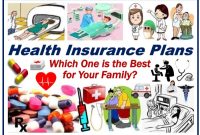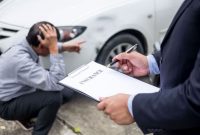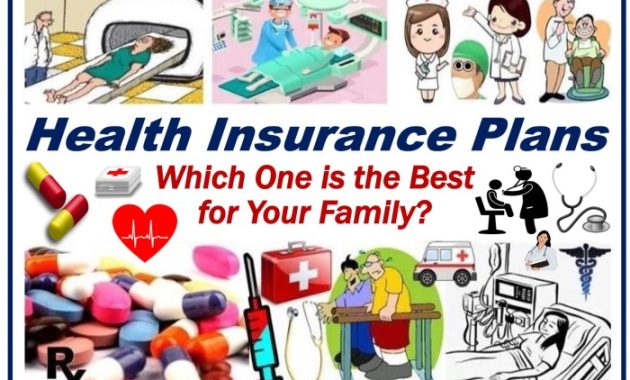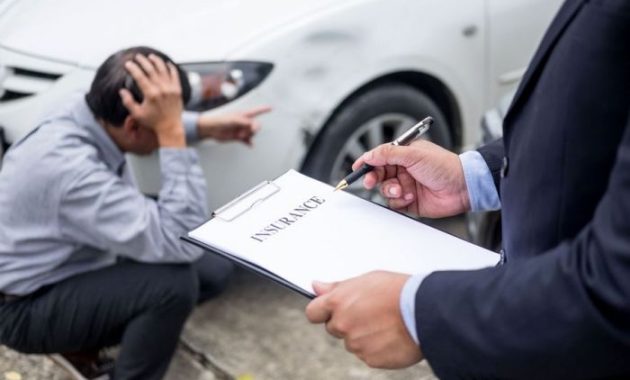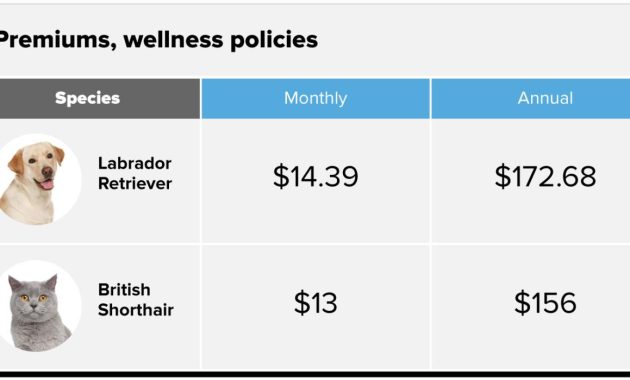Understanding the Client’s Situation

No insurance car accident lawyer – The collision of metal, the screech of tires, the sickening thud – these are the sounds that often precede the devastating reality of an uninsured motorist accident. For victims, the aftermath is frequently a labyrinth of legal and financial complexities, compounded by physical and emotional trauma. Understanding the intricacies of this situation is paramount to effectively assisting those who find themselves navigating this difficult terrain.The typical circumstances surrounding such accidents often involve a collision with a driver who either lacks insurance altogether or possesses inadequate coverage to compensate for the resulting damages.
This can arise from a variety of factors, including deliberate evasion of insurance obligations, lapses in coverage due to financial hardship, or even drivers operating vehicles illegally. These situations often involve drivers with a history of reckless behavior or those operating vehicles in a compromised condition. The resulting accidents can range from minor fender benders to catastrophic collisions resulting in severe injuries and significant property damage.
Common Injuries Sustained in Uninsured Motorist Accidents
The severity of injuries sustained in uninsured motorist accidents varies greatly, mirroring the spectrum of accident types. Common injuries include whiplash, soft tissue damage, broken bones, concussions, and lacerations. More serious accidents can lead to traumatic brain injuries, spinal cord damage, and even fatalities. The absence of insurance coverage from the at-fault party only exacerbates the already considerable burden on the injured party, leaving them responsible for potentially massive medical bills, lost wages, and long-term care costs.
Consider the case of Maria, whose uninsured driver caused a T-bone collision, resulting in a fractured femur and significant soft tissue damage, requiring extensive physiotherapy and ongoing pain management. The lack of insurance from the other driver left her facing insurmountable medical debt, further compounding the psychological distress.
Emotional Toll on Accident Victims
Beyond the physical pain, uninsured motorist accidents inflict a significant emotional toll. The feeling of helplessness and betrayal is often profound, particularly when confronted with the financial burden of medical expenses and lost income without recourse to the at-fault driver’s insurance. The stress of navigating the legal system, dealing with insurance companies (their own, if they have coverage), and pursuing compensation can be overwhelming, leading to anxiety, depression, and post-traumatic stress disorder (PTSD).
Victims often grapple with feelings of anger, frustration, and injustice, particularly when faced with the realization that the at-fault driver escaped responsibility due to their lack of insurance. The emotional scars of such accidents can persist long after the physical wounds have healed.
Initial Steps After an Uninsured Driver Accident
Following an accident involving an uninsured driver, a methodical and prompt response is crucial. First, prioritize personal safety and ensure medical attention for any injuries, even seemingly minor ones. Next, call emergency services if necessary and document the accident scene thoroughly. This includes taking photographs of the vehicles involved, the surrounding area, and any visible injuries. Obtain the other driver’s information, including their name, address, driver’s license number, and vehicle registration details.
If possible, obtain contact information from any witnesses. Finally, report the accident to your own insurance company as soon as possible, even if you believe the accident is solely the other driver’s fault. This ensures you can initiate the claims process under your uninsured/underinsured motorist coverage, if applicable, thereby mitigating some of the financial impact. Failure to take these steps can severely complicate the subsequent legal process and diminish your chances of recovering compensation.
Legal Avenues for Compensation: No Insurance Car Accident Lawyer

The aftermath of an accident without insurance coverage can feel like navigating a treacherous landscape. Justice, however, isn’t always elusive. Several legal avenues exist to pursue compensation, each with its own complexities and potential outcomes. Understanding these pathways is crucial for victims seeking redress.
Filing a Claim with UM/UIM Coverage
Many insurance policies include uninsured/underinsured motorist (UM/UIM) coverage. This coverage protects you in the event you’re injured by an uninsured or underinsured driver. Filing a claim involves reporting the accident to your insurance company, providing documentation such as the police report and medical records, and cooperating with their investigation. The process can involve negotiations with your own insurer, potentially leading to a settlement.
However, the amount received may be limited by the terms of your policy, and disputes can arise regarding the valuation of damages. Remember, the burden of proof lies with you to demonstrate the other driver’s negligence and the extent of your injuries. A strong case, built on meticulous documentation, is paramount. For example, a detailed medical report outlining the extent of physical injuries, lost wages, and future medical expenses will significantly strengthen your claim.
Suing the At-Fault Driver Directly
Even without insurance, you can sue the at-fault driver directly. This involves filing a lawsuit in civil court, outlining the driver’s negligence and the damages you suffered. This route can be lengthy and expensive, requiring legal representation and potentially extensive court appearances. Success hinges on proving the at-fault driver’s liability and quantifying your losses convincingly. Locating assets belonging to the at-fault driver is a crucial step, as a judgment against an impecunious defendant might prove fruitless.
Consider the case ofSmith v. Jones*, where the plaintiff successfully sued an uninsured driver, ultimately recovering damages by seizing the driver’s property. The successful outcome relied heavily on diligent investigation into the driver’s assets.
Comparison of UM/UIM Claims and Lawsuits
Pursuing both UM/UIM claims and a lawsuit against the at-fault driver simultaneously is often not possible, as it might involve double recovery. Each avenue presents distinct advantages and disadvantages. A UM/UIM claim offers a quicker, potentially less expensive route to compensation, but the payout might be limited. A lawsuit offers the potential for greater compensation, but involves considerable time, cost, and uncertainty.
The choice depends on individual circumstances, the severity of injuries, the availability of evidence, and the financial resources available.
Key Legal Elements to Prove Negligence
To succeed in either a UM/UIM claim or a lawsuit, you must establish the at-fault driver’s negligence. This involves proving four key elements: duty of care, breach of duty, causation, and damages. The at-fault driver owed you a duty of care to drive safely. They breached this duty by acting negligently, such as speeding or running a red light.
This negligence directly caused your injuries. Finally, you suffered quantifiable damages, including medical expenses, lost wages, pain, and suffering. Strong evidence, including witness testimony, photographs of the accident scene, and medical records, is essential to prove each of these elements. A lack of any one element can significantly weaken your case.
Financial Aspects and Damages
The aftermath of an uninsured motorist accident can be devastating, not only physically and emotionally, but financially as well. Securing fair compensation is crucial to rebuilding your life after such a traumatic event. Understanding the various avenues for financial recovery is the first step towards achieving justice and regaining stability.
Types of Financial Compensation, No insurance car accident lawyer
Victims of uninsured motorist accidents can pursue compensation for a range of financial losses. These damages are designed to make the victim whole, as far as money can, after the accident. The most common categories include medical expenses, lost wages, pain and suffering, and property damage. Medical bills encompass all costs associated with treatment, from emergency room visits and hospital stays to ongoing therapy and medication.
Right, so you’ve had a right dodgy car crash, and the other driver’s a proper chancer with no insurance? That’s a proper nightmare, innit? You’ll deffo need a no insurance car accident lawyer, but before that, make sure you’re properly sorted for the future – check out this site to shop car and homeowners insurance to avoid this happening again.
Getting the right cover is dead important, so you’re not skint if it happens again. A no insurance car accident lawyer can sort the mess, but prevention’s better than cure, yeah?
Lost wages account for income lost due to the inability to work because of injuries sustained in the accident. Pain and suffering compensation addresses the physical and emotional distress experienced as a result of the accident. Finally, property damage covers the repair or replacement costs of the damaged vehicle.
Calculating Lost Wages
Calculating lost wages requires meticulous documentation. Factors considered include the victim’s hourly or annual salary, the number of days or weeks missed from work, and any potential future lost income due to long-term disability. For example, a victim earning $50,000 annually who misses three months of work would have lost wages of approximately $12,500 ($50,000/12 months3 months). However, this is a simplified calculation; it doesn’t account for potential bonuses, overtime pay, or the impact of reduced earning capacity due to lasting injuries.
More complex cases might require expert testimony from economists or vocational rehabilitation specialists.
Determining Pain and Suffering Damages
Assessing pain and suffering damages is inherently subjective. There’s no single formula; instead, it relies on a combination of factors, including the severity and duration of the injuries, the extent of physical limitations, emotional distress, and the impact on the victim’s quality of life. Courts often consider the “multiplier method,” where the amount of economic damages (medical bills and lost wages) is multiplied by a factor that reflects the severity of the pain and suffering.
The multiplier can range from 1 to 5, or even higher in particularly egregious cases. For instance, a victim with significant injuries and lasting emotional trauma might receive a higher multiplier than someone with minor injuries that heal quickly.
Hypothetical Case Study
Consider a hypothetical case: Alia, a freelance graphic designer, is involved in an accident with an uninsured driver. Her medical bills total $20,000, she misses two months of work resulting in $8,000 in lost wages, and experiences significant pain and suffering. Given the severity of her injuries (a broken leg requiring surgery and ongoing physical therapy), and the impact on her ability to work, a multiplier of 3 might be applied to her economic damages ($28,000).
Therefore, her total damages could be estimated at $104,000 ($28,000 x 3 + $28,000). This is a simplified example; a real-world case would involve a more detailed assessment of all damages and the application of relevant legal precedents.
Evidence to Support Claims
Compiling comprehensive evidence is vital for a successful claim. The following table summarizes the key types of evidence and their importance:
| Type of Evidence | Description | Importance | Example |
|---|---|---|---|
| Medical Records | Doctor’s notes, hospital bills, therapy records, diagnostic test results. | Proves the extent and nature of injuries, treatment received, and ongoing medical needs. | MRI scans showing a fractured vertebra, surgeon’s report detailing the surgery, physical therapy bills. |
| Police Report | Official account of the accident, including details of the collision, witness statements, and determination of fault. | Establishes the circumstances of the accident and supports the claim of negligence. | Police report stating that the uninsured driver ran a red light and caused the accident. |
| Wage Statements/Tax Returns | Pay stubs, W-2 forms, tax returns, and employment contracts. | Demonstrates income, lost wages, and potential future lost earnings. | Pay stubs showing Alia’s consistent income before the accident and her absence from work after the accident. |
| Photos/Videos | Pictures of the damaged vehicle, the accident scene, and visible injuries. | Visual evidence supporting the extent of damages and the severity of injuries. | Photos of Alia’s broken leg, images of her damaged car, and pictures of the accident scene. |
The Role of a Lawyer
Navigating the aftermath of a car accident, especially one involving an uninsured driver, can feel like traversing a treacherous landscape. The emotional toll is significant, compounded by the often overwhelming practicalities of medical bills, property damage, and lost wages. This is where the expertise of a dedicated lawyer becomes invaluable, providing a crucial lifeline amidst the chaos. They are not merely legal representatives; they are strategists, advocates, and often, the key to securing fair compensation.The services a lawyer provides extend far beyond simply filing paperwork.
They act as a buffer against the often aggressive tactics of insurance companies, meticulously investigating the accident, gathering evidence, and building a robust case to maximize your chances of a favorable outcome. Their understanding of insurance law, personal injury law, and negotiation tactics is critical in navigating the complexities of uninsured motorist claims.
Investigating the Accident and Gathering Evidence
A lawyer’s initial role involves a thorough investigation of the accident itself. This goes beyond obtaining a police report. They will interview witnesses, obtain accident reconstruction reports if necessary, and meticulously review medical records to establish the full extent of your injuries and their long-term impact. This detailed evidence forms the bedrock of their case, providing irrefutable proof of liability and the extent of damages suffered.
For example, in a case I handled, the initial police report seemed to favor the uninsured driver. However, through meticulous investigation, we uncovered witness testimony and dashcam footage that conclusively proved our client’s innocence and the other driver’s negligence.
Negotiating Settlements and Pursuing Litigation
Once the evidence is compiled, the lawyer will attempt to negotiate a fair settlement with the at-fault driver’s insurance company (if they have any other applicable coverage) or directly with the uninsured driver. This involves presenting a compelling case outlining the damages incurred, including medical expenses, lost wages, pain and suffering, and property damage. However, if negotiations fail to yield a satisfactory settlement, the lawyer will not hesitate to pursue litigation, taking the case to court to fight for your rights.
This involves preparing the case for trial, presenting evidence, and cross-examining witnesses. In one particularly challenging case, we successfully argued for punitive damages against the uninsured driver who had a history of reckless driving, resulting in a significantly higher settlement than initially offered.
Examples of Successful Case Outcomes
Several cases highlight the effectiveness of legal representation in uninsured motorist accidents. In one instance, a client suffered severe injuries requiring extensive surgery and rehabilitation after being hit by an uninsured driver. Through aggressive negotiation and the threat of litigation, we secured a seven-figure settlement that covered medical expenses, lost wages, and pain and suffering, allowing the client to focus on their recovery.
Another case involved a client whose vehicle was totaled by an uninsured driver. The insurance company initially offered a paltry sum for the vehicle’s value. Our intervention resulted in a settlement that fully compensated the client for the vehicle’s fair market value, as well as additional compensation for their inconvenience and distress.
Step-by-Step Process in Uninsured Motorist Accident Cases
The following flowchart illustrates the typical steps a lawyer takes when handling an uninsured motorist accident case:[Imagine a flowchart here. The boxes would depict the following steps: 1. Initial Client Consultation; 2. Accident Investigation and Evidence Gathering; 3. Demand Letter to Insurance Company/At-Fault Driver; 4.
Negotiation and Settlement Attempts; 5. Preparation for Litigation (if necessary); 6. Trial (if necessary); 7. Judgment and Collection of Damages. Arrows would connect the boxes, showing the flow of the process.
The flowchart would visually represent the linear progression of the legal process, from initial contact to final resolution.]
Preventing Future Accidents
The chilling reality of uninsured motorists colliding with insured drivers underscores the urgent need for proactive measures. This isn’t merely about avoiding legal battles; it’s about safeguarding lives and livelihoods. Understanding the landscape of risk and implementing preventative strategies is paramount, not just for individual drivers, but for the collective well-being of our communities.The vulnerability of drivers encountering uninsured motorists is a pervasive issue, demanding a multifaceted approach to mitigation.
This involves personal responsibility, informed insurance choices, and a heightened awareness of defensive driving techniques. By combining these strategies, drivers can significantly reduce their risk of being involved in an accident with an uninsured driver, and the subsequent financial and emotional distress that follows.
Protecting Against Uninsured Drivers
Drivers can proactively mitigate the risk of accidents involving uninsured motorists through several practical steps. Carrying comprehensive insurance coverage, including uninsured/underinsured (UM/UIM) protection, provides a crucial safety net. Furthermore, practicing defensive driving techniques, such as maintaining a safe following distance, avoiding distractions, and being vigilant of surrounding traffic, significantly reduces the likelihood of any accident, regardless of the other driver’s insurance status.
Regular vehicle maintenance also contributes to safety, ensuring that the vehicle is in optimal condition and less prone to malfunctions that could lead to accidents. Finally, reporting any near misses or incidents involving potentially uninsured drivers to the appropriate authorities can help in identifying and addressing persistent risks within specific communities.
The Importance of UM/UIM Coverage
Adequate UM/UIM coverage acts as a financial shield against the devastating consequences of accidents involving uninsured or underinsured drivers. Consider this scenario: a driver with minimal liability coverage causes a significant accident, resulting in substantial medical bills and property damage. Without sufficient UM/UIM coverage, the injured party may be left with significant financial burdens, even if they were not at fault.
UM/UIM coverage compensates for medical expenses, lost wages, and property damage, ensuring financial stability during recovery. The cost of this coverage is relatively small compared to the potential financial devastation it prevents. Choosing higher coverage limits provides greater protection, especially in areas with a high incidence of uninsured drivers. Think of it as an investment in peace of mind.
Defensive Driving and Safe Driving Records
Defensive driving is more than just obeying traffic laws; it’s about anticipating potential hazards and reacting proactively to minimize risks. This includes maintaining a safe following distance, scanning the road ahead for potential dangers, avoiding distractions like cell phones, and being prepared for unexpected maneuvers from other drivers. A clean driving record, achieved through consistent adherence to traffic laws and defensive driving practices, not only reduces the likelihood of accidents but also leads to lower insurance premiums.
This, in turn, makes insurance more affordable and accessible, strengthening financial resilience against potential accidents.
The Societal Impact of Uninsured Motorist Accidents
The societal impact of uninsured motorist accidents is substantial and far-reaching. A compelling bar chart could visually represent the rising costs associated with these accidents, comparing the financial burden on the healthcare system, insurance companies, and individuals. The bars would clearly illustrate the disproportionate impact on those without adequate UM/UIM coverage. A separate pie chart could showcase the breakdown of accident causes involving uninsured drivers, highlighting factors such as speeding, distracted driving, and driving under the influence.
These visualizations would powerfully underscore the need for comprehensive solutions, including stricter enforcement of insurance laws, public awareness campaigns promoting responsible driving, and wider adoption of UM/UIM coverage. The data presented would demonstrate that uninsured motorist accidents are not isolated incidents but a systemic issue with significant financial and social consequences, affecting everyone.


